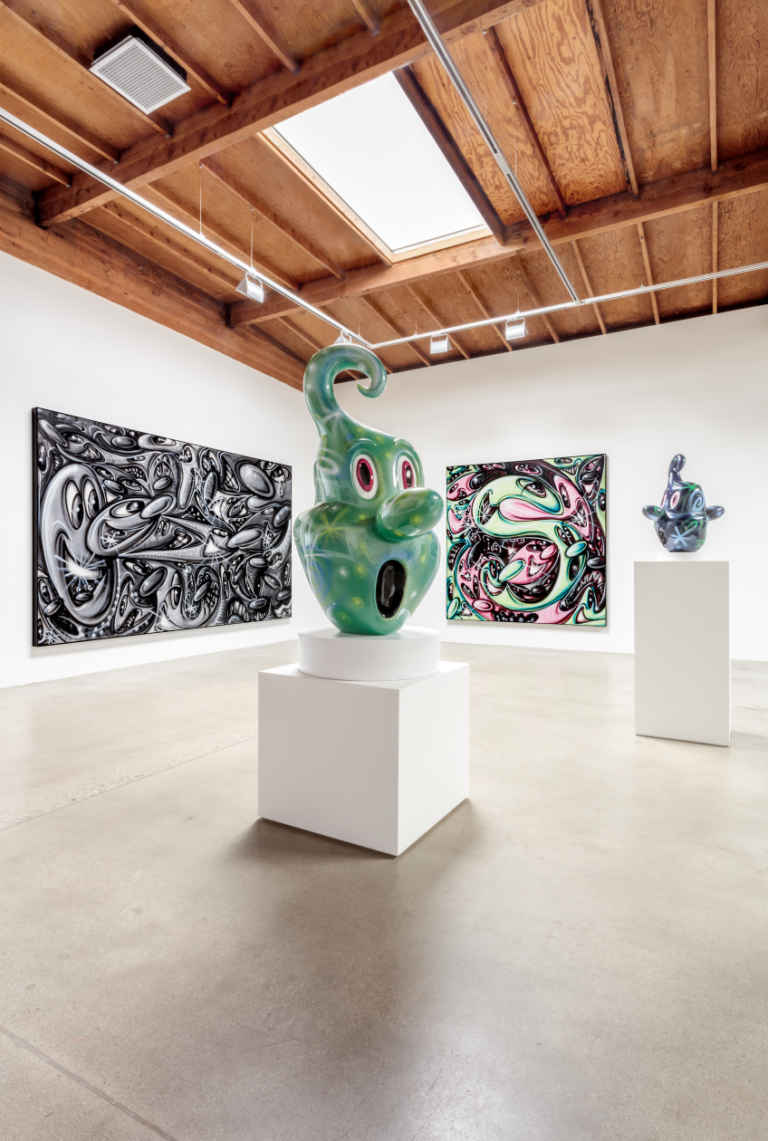
INTERVIEW WITH ARTIST,
Kenny Scharf
Interview by: Juan Marco Torres
Photos by: Josh White
American artist Kenny Scharf is most known for being part of New York City’s East Village art scene during the 80’s alongside Basquiat and Haring. He has contributed to a new street art lexicon that continues to position itself as an equal player on the contemporary art world scene. For his latest exhibition at Honor Fraser, Scharf remixes a cast of familiar characters, within an installation of vibrant paintings, glossy sculptures, and a gallery-sized Cosmic Cavern, exploring the various ways we relate to conflict, chaos, and to one another. ContentsCulture caught up with Scharf to talk about what inspires him today, how he keeps his intuition sharp and how he keeps on rocking the art world upside-down and around.
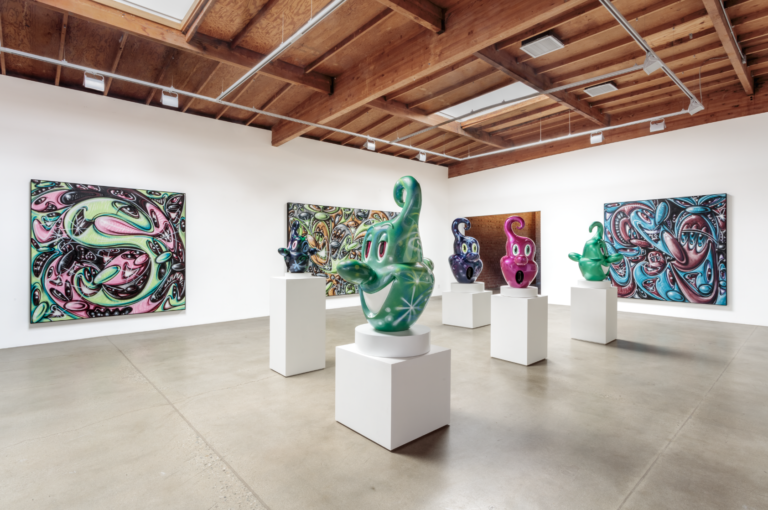
Juan Marco Torres: There’s basically nowhere in LA we can escape your art. From the West Hollywood library, to your recent Skid Row mural and all the people driving their cars as a result of your “karbombz” project. What do you think it is about your work that resonates with Angelenos so much?
Kenny Scharf: I am glad to hear it resonates! Los Angeles is an outdoor city and of course a car city. I’m a firm believer in art for everyone and what is more ubiquitous than cars? They get around literally!
JMT: Can you tell me a bit about how you started working with spray paint?
KS: I moved to New York City in 1978 at the height of subway car painting and was very inspired by the spray paint techniques which reminded me a lot of the airbrush 70s Van art from my childhood and then I met a lot of graffiti artists and was inspired to pick up a can and try it myself!
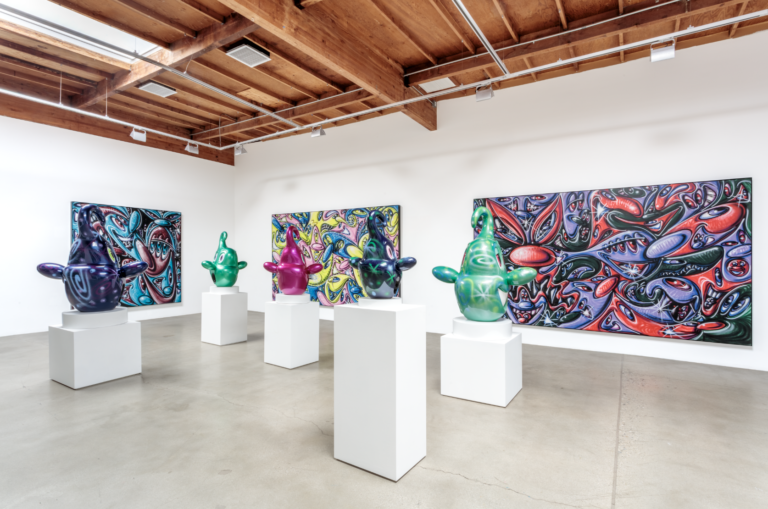
JMT: You are one of the few artists who is able to move freely through the worlds of street and fine art. To what do you owe this to?
KS: Artists in general can move around in different societies and environments and feel at home. My ambition was to not limit myself to one world or another. I love to cross boundaries between the fine art world and the art of the streets and people. I incorporate the language of art and art history yet I believe in inclusion for the masses to elevate and inspire everyday people as well as educated art elitists.

JMT: Your show at Honor Fraser presents your new 42nd Cosmic Cavern. How did you come up with this concept originally and how is this last one different from the past?
KS: Back in 1982 I was living in a funky old house near Times Square and became obsessed with garbage, plastic, appliances etc. I discovered a “closet“ in this old house I was living in, cleared it out and dedicated it to this collection of garbage that I was collecting. I found an old 60s type blacklight poster store and bought a black light and decided to paint everything Dayglow and from there it just started to become a sort of refuge escape of artificial nature in the hectic city. Then at one point I moved it all over to my next studio that I had at PS1 and decided to explore it further and it just grew and grew and became this “thing”! Each “Closet” or “Cosmic Cavern“ would change as all the pieces would get taken down and reassembled in a different way. This particular CosmicCavern is larger and I decided to mix it up with some open spaces with painting on canvas that almost act as windows
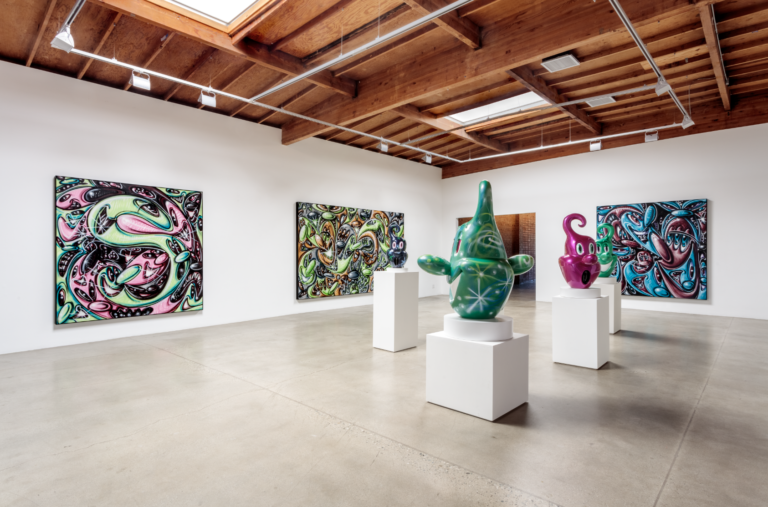
JMT: Warhol and Basquiat are some of the artists that you related with during your formative years in NYC. Did they have any influence in your work?
KS:Basquiat was my peer and Warhol I would consider more of a hero/mentor and yes I learned a lot from them as any artist should take and reassemble in a personal way but it is truly an honor to be inspired and influenced by them. We were always bouncing ideas and testing each other in a healthy competition.
JMT: Your work process is deeply intuitive. How do you keep your intuition sharp and trust-worthy?
KS: To be spontaneous is to invite the unknown and fill it with chance. Every undertaking is a mystery and it provides excitement and trust and letting things from outside your consciousness take over. I’m always excited because I don’t know where I’m exactly going!
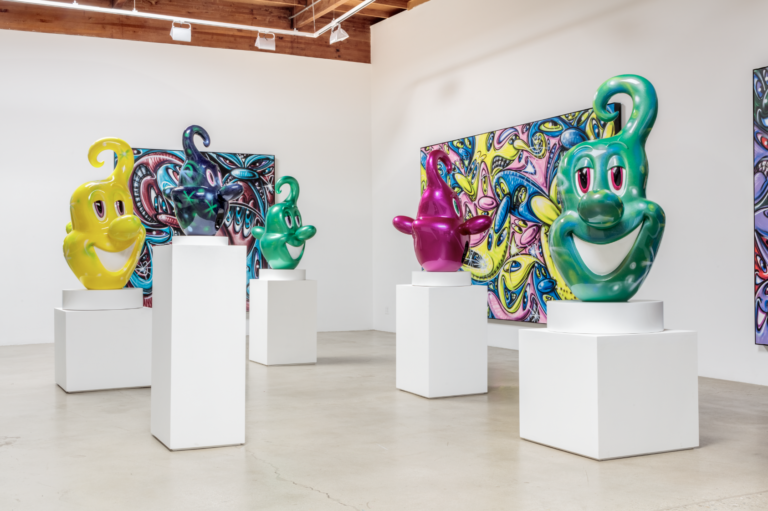
JMT: How does your process differ when working with sculpture?
KS: Sculpture is much more defined and needs some sort of pre-planning in order for it to exist in the real world in its physicality. Most of my paintings in a way are paintings of sculptures. They have light, shadow and a cast shadow so it’s easy for me to create a real 3-D image based on so many images I’ve created.
JMT: GREYNICA is not your usual choice of bright colors. Why did you choose a darker palette for this piece?
KS: Sometimes moving out of what you’re used to creates new challenges and allows you to focus on other things. Painting without color in a way narrows down the ingredients of art making and allows for new ways of looking at something familiar.
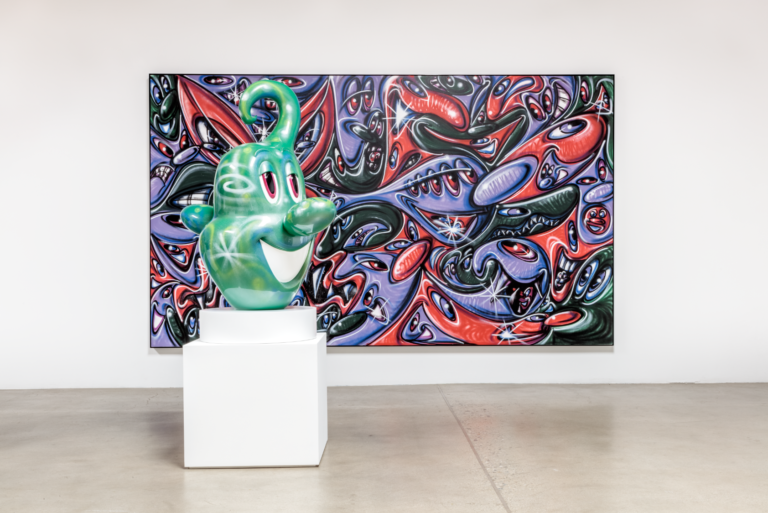
JMT: What are some of your favorite spots to go to in LA?
KS: I love the ocean. I love to be in it. I love to look at it. I love the fact that there’s no cars, buildings or freeways on it! I love to ride my bike through neighborhoods and discover interesting idiosyncratic architecture and gardens reflecting their individuality in the city.
Interview by: Juan Marco Torres
Photos by: Josh White